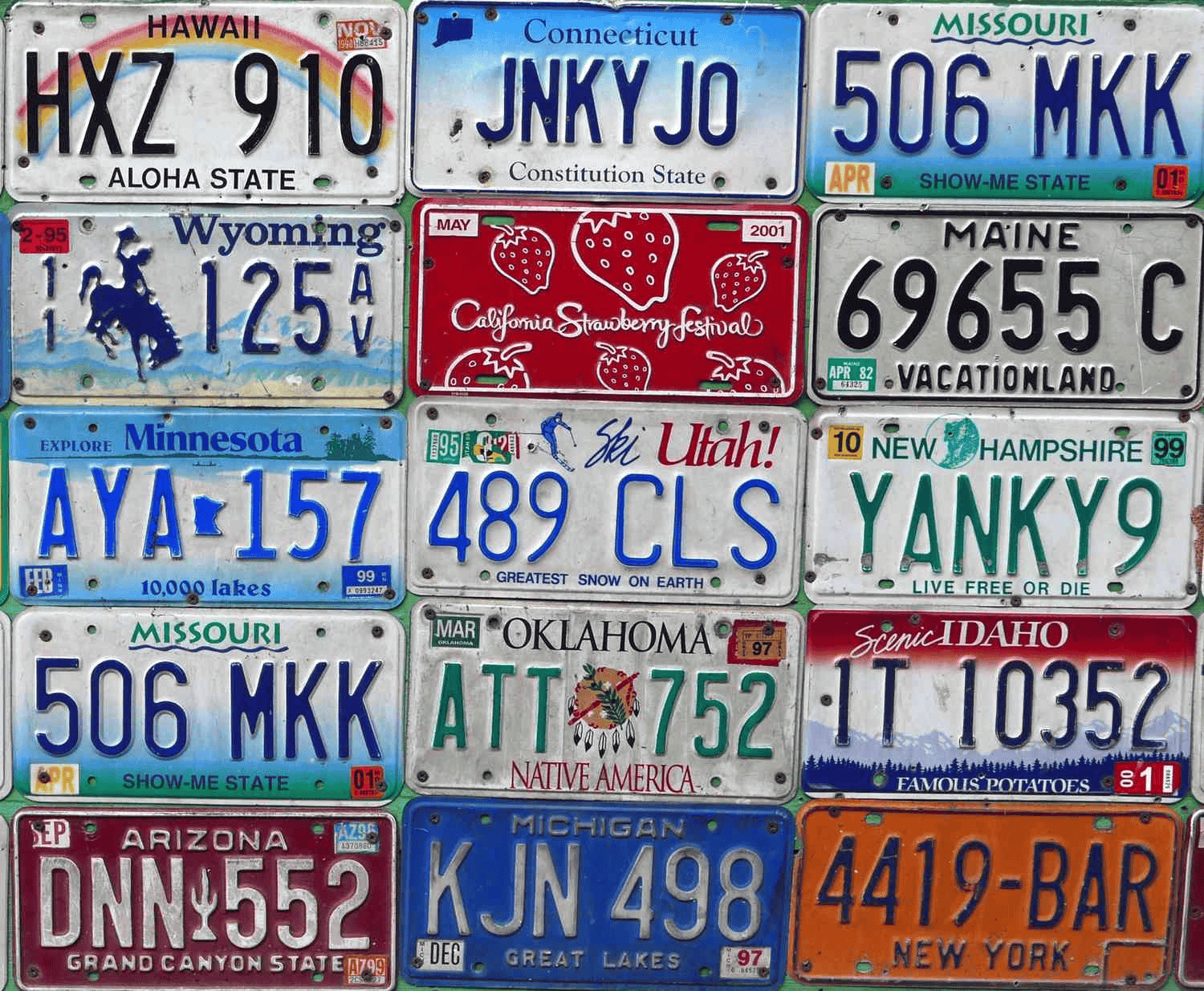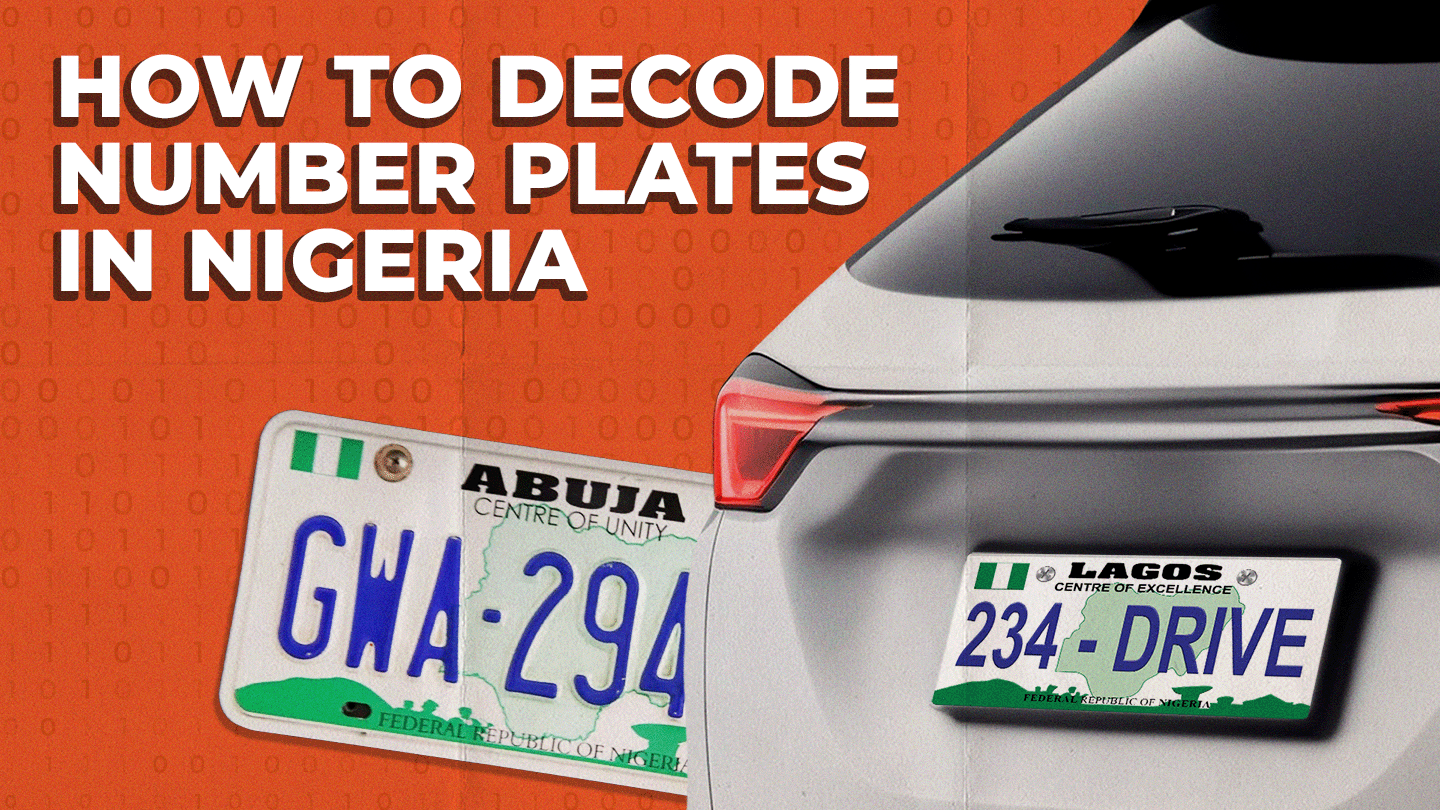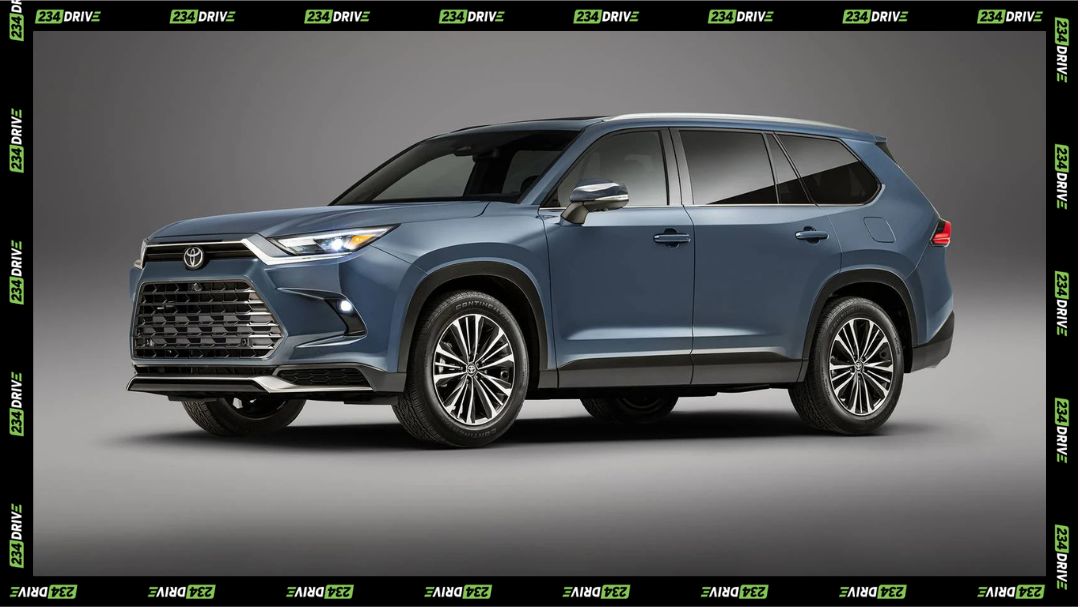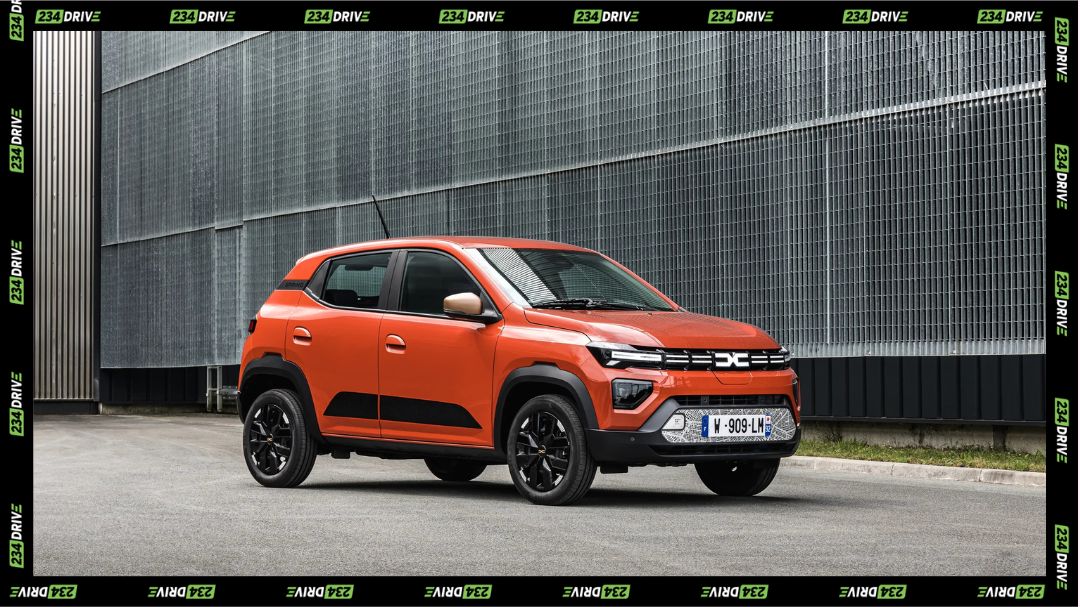Is it even a Nigerian party if the MC doesn’t abruptly kill the music to call for the owner of the vehicle to go and park his vehicle properly? While the assortment of letters and numbers read from the number plate may seem completely random, there is in fact a system to it and in today’s article, we are here to break it down for you. But, before we do that, let us take a drive down memory lane to the history of number plates.


In virtually all countries of the world, number plates are a legal requirement that is meant to be displayed on all kinds of road vehicles for identification purposes. The idea of identifying cars with number plates started in France in 1893, with the US issuing their own version of the concept eight years later in 1901. The 34th Governor of New York, Benjamin Odell Jr. signed a law requiring car owners to register their vehicles and display identifying letters on their vehicles.
The History of Number Plate Materials
Since the introduction of number plates, different kinds of materials have been used for the framework on which the various numbers and letters are embossed. Among these materials used are porcelain, leather, wood, rubber, plastic and copper. However, in 1912, steel became the material of choice because of its durability. Number plates have been made using steel ever since, except for a short period during the Second World War when metal was used for the war effort.
By 1957, international governing organizations standardized number plate sizes, with the size requirement in North America and Canada remaining 6 inches by 12 inches to this day. The North American standard for number plates is (300 mm × 152 mm (10 in × 5 in)). Nigeria, as well as Liberia and Somalia are the only three African countries in Africa that make use of the North American number plate standard size. Likewise, Egypt makes use of an approximately similar size (350 mm × 170 mm (15 in × 5 in)). The current Nigerian vehicle registration number plates were introduced in 1992 and were revised in 2011.
Now, to the part that we have all been waiting for. How do you decode a Nigerian number plate? The unique Nigerian number plate combination is in the format ‘ABC-123DE’. The first three letters (ABC) on a Nigerian number plate indicate the Local Government Area (LGA) in which the vehicle was registered. So, remember that the Nigerian vehicle registration number was revised in 2011.

Hence, all cars registered from 2011 are represented by the next letter, ‘D’. Meaning that if a car was registered in 2011 it bears an A, 2012 – B, 2013 – C, 2014 – D and so on. The last letter ‘E’, represents a batch of 1000 cars that are registered at a time, while the numbers ‘123’ represent the exact number in the batch of 1000 cars that were registered. I know this might be a little bit confusing, but here is a video that simplifies what I have just explained.
In order to fully grasp the decoding of Nigerian number plates, we are going to do some exercises. The first being a plate with the following write-up, ‘APP – 456CV (Lagos)’. In this number plate, APP refers to the LGA, in this case being Apapa. ‘C’ means that the car was registered in 2013 and ‘V’ means that this car belongs to the 22nd batch of 1000 vehicles registered for the year 2013. We know that this vehicle belongs to the 22nd batch, because ‘V’ is the 22nd letter of the alphabet. On the other hand, ‘456’ means that this vehicle is the 456th vehicle out of 1000 vehicles registered. More so, on this number plate are the words, ‘Centre of Excellence’ which represents the slogan of the state, in this case being Lagos.
Another example is a number plate with the following write-up, ‘BEN-319HM’ (EDO). ‘BEN’ once again stands for the LGA which is Oredo (Benin City), ‘H’ means that this vehicle was registered in 2018. ‘M’ means that this vehicle belongs to the 13th batch of 1000 cars registered in 2018, and ‘319’ means that this vehicle is the 319th out of 1000 vehicles registered. Also, the slogan for Edo state being “The Big Heart” is boldly written on the number plate.

There are 774 LGAs in Nigeria, so one would have to familiarize themselves with all the abbreviations across the 36 states of Nigeria. However, Lagos is a very common number plate, so we have provided you with a table below containing all the LGAs in Lagos State. Also note-worthy is that there are different types of number plates in Nigeria and they are all colour-coded. Personal vehicles have the content of their number plates written in blue, while commercial vehicles are written in red and government number plates are in green.

This brings us to the end of today’s article and I hope you were able to fully grasp the idea behind how to decode a Nigerian number plate. Once again, I urge you to check out this video in which Olamide and Crank of 234Drive easily illustrate how to interpret Nigerian number plates.










